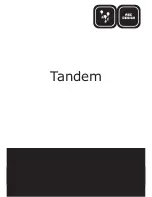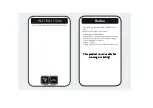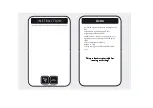
OVER-TEMPERATURE PROTECTION
when the controller temperature exceeds the set value, it will decrease the charging power
or halt charging. See the following diagram:
To ensure the controller
’
s performance is kept at its optimum level, we recommend that the
following items be checked twice a year:
Make sure the airflow around the controller is not blocked and clear away any dirt or debris
on the radiator.
Check if any exposed wire gets its insulation undermined due to exposure to sunlight,
friction with other adjacent objects, dry rot, damage by insects or rodents, etc. Repair or
replace those affected when necessary.
Verify that indicators function in line with device operations. Note any faults or displayed
errors and take corrective measures if necessary.
Check all wiring terminals for any sign of corrosion, insulation damage, overheat,
combustion/discolouration, and tighten the terminal screws firmly.
Check if there are any dirt, nesting insects or corrosion and clean as required.
If the lightening arrester has lost its efficacy, replace it with a new one timely to prevent the
controller and even other devices owned by the user from being damaged by lightening.
WARNING! RISK OF ELECTRIC SHOCK!
Before carrying out the above checks or operations, always
make sure all power supplies of the controller have been cut off.
E0
No abnormality
ERROR indication off
E1
Battery over-discharge
BAT indicator flashing slowly ERROR indicator steady on
E2
System over-voltage
BAT indicator flashing quickly ERROR indicator steady on
E3
Battery under-voltage warning
ERROR indicator steady on
E4
Load short-circuit
LOAD indicator flashing quickly ERROR indicator steady on
E5
Load overloaded
LOAD indicator flashing quickly ERROR indicator steady on
E6
Over-temp. inside controller
ERROR indicator steady on
E8
PV component overloaded
ERROR indicator steady on
E10
PV component over-voltage
ERROR indicator steady on
E13
PV component reversely connected
ERROR indicator steady on



































